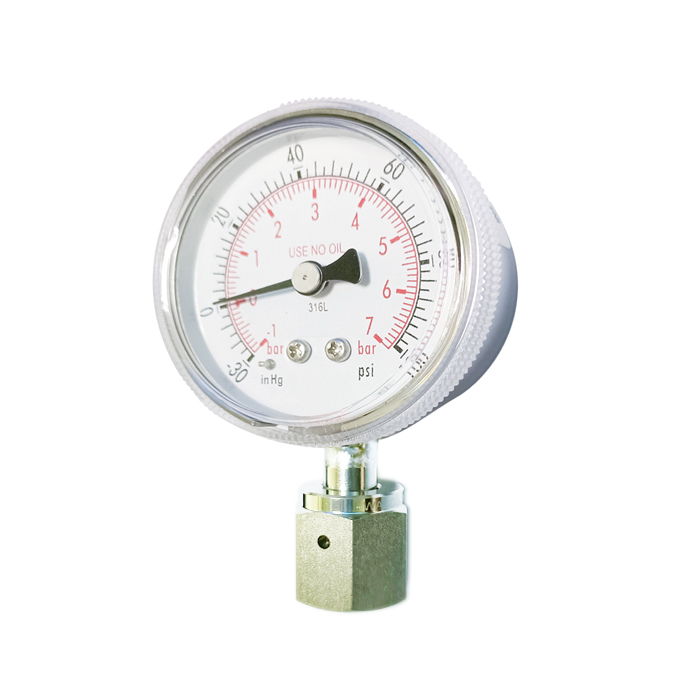
Dec . 03, 2024 23:00 Back to list
High Temperature Differential Pressure Gauge Operation and Maintenance Guide for Optimal Performance
Understanding High Temperature Differential Pressure Gauge Service
In industrial processes and applications, maintaining precise measurements of pressure and temperature is crucial for ensuring safe and efficient operations. One of the vital instruments used in these contexts is the high temperature differential pressure gauge. This specialized gauge is instrumental in monitoring pressure differentials across various systems, particularly in environments with elevated temperatures. In this article, we will explore the importance, functioning, and applications of high temperature differential pressure gauges, as well as considerations for their service and maintenance.
What is a High Temperature Differential Pressure Gauge?
A high temperature differential pressure gauge is an instrument designed to measure the difference in pressure between two points in a system, where ambient temperatures can exceed standard operating conditions. These gauges are engineered to withstand high thermal environments, making them essential in industries like power generation, oil and gas, chemical processing, and HVAC applications.
The operation of differential pressure gauges relies on the principle of comparing two pressure inputs. Typically, one pressure port (the high side) is connected to the area of interest where pressure is greater, while the other port (the low side) is exposed to another pressure zone. The gauge outputs the difference between these two measurements, providing critical data necessary for process control and monitoring.
Importance of Differential Pressure Measurement
1. Process Control and Optimization Accurate differential pressure readings are vital for controlling processes. In filtration systems, for instance, monitoring the pressure drop across filters can indicate when maintenance is needed. This helps in minimizing downtime and ensures that processes operate within optimal parameters.
2. Leak Detection Differential pressure gauges are also employed in leak detection systems. By continuously monitoring pressure differences, any discrepancies can signal potential leaks within pipelines or vessels, allowing for prompt remediation.
3. Safety Monitoring In high-temperature settings, monitoring pressure differentials can prevent catastrophic failures. For example, in boilers and reactors, ensuring that pressure levels remain within specified limits is crucial for preventing explosions or equipment failures.
Working Principle of High Temperature Differential Pressure Gauges
High temperature differential pressure gauges commonly utilize bourdon tube, diaphragm, or capacitive sensor technologies. The selection of the appropriate technology depends on the specific application requirements, including the operational temperature range, pressure range, and fluid properties.
high temp differential pressure gauge service

- Bourdon Tube Gauges These gauges employ a curved tube that straightens when pressure is applied. The movement of the tube drives a pointer on a dial, indicating the pressure differential. - Diaphragm Gauges In these gauges, the differential pressure causes a diaphragm to flex. This movement is then translated into a readable format, either analog or digital, providing a direct measurement of pressure difference.
- Capacitive Sensors These are more advanced and use changes in capacitance caused by pressure differences to produce accurate readings. They can be particularly useful in harsh environments due to their resistance to corrosion and high temperatures.
Service and Maintenance Considerations
Maintaining high temperature differential pressure gauges is critical for ensuring their longevity and accuracy. Here are several key considerations for service and maintenance
1. Regular Calibration To ensure accurate readings, gauges should be calibrated regularly against known standards. This is particularly important in sectors where precision is paramount.
2. Inspection for Damage Routine inspections are necessary to detect any physical damage to the gauge or its fittings. Corrosion, wear, and tear can significantly affect performance.
3. Temperature Management Although the gauges are designed for high temperatures, sudden thermal shocks can cause damage. Proper installation and use within specified temperature limits are essential.
4. Fluid Compatibility It is vital to ensure that the gauge materials are compatible with the fluids being measured. Incompatible materials can lead to contamination and gauge failure.
5. Documentation and Record-Keeping Keeping detailed records of maintenance activities, calibrations, and any incidents that occur is critical for troubleshooting and ensures compliance with industry regulations.
Conclusion
High temperature differential pressure gauges play a pivotal role in maintaining safe and efficient operations across various industries. Their ability to provide precise pressure differential measurements, especially in high-temperature environments, is indispensable for process control, leak detection, and safety monitoring. Understanding their working principles, importance, and maintenance considerations can significantly enhance operational efficiency and safety. Regular service and diligence in monitoring performance will help ensure that these vital instruments continue to operate effectively. By investing in quality gauges and proper maintenance practices, organizations can safeguard their processes and enhance overall productivity.
-
High-Precision Mass Diaphragm Pressure Gauge - Reliable & Durable Solutions
NewsJun.10,2025
-
Explain Diaphragm Pressure Gauge Expert Guide, Top Manufacturers & Quotes
NewsJun.10,2025
-
Affordable Differential Pressure Gauge Prices in China Top Manufacturers
NewsJun.10,2025
-
Reliable Water Fire Extinguisher Pressure Gauges for Safety
NewsJun.10,2025
-
Durable Diaphragm Protection Pressure Gauges Get Quote
NewsJun.09,2025
-
WIKA Differential Pressure Gauge with Switch Reliable Monitoring & Control
NewsJun.09,2025
